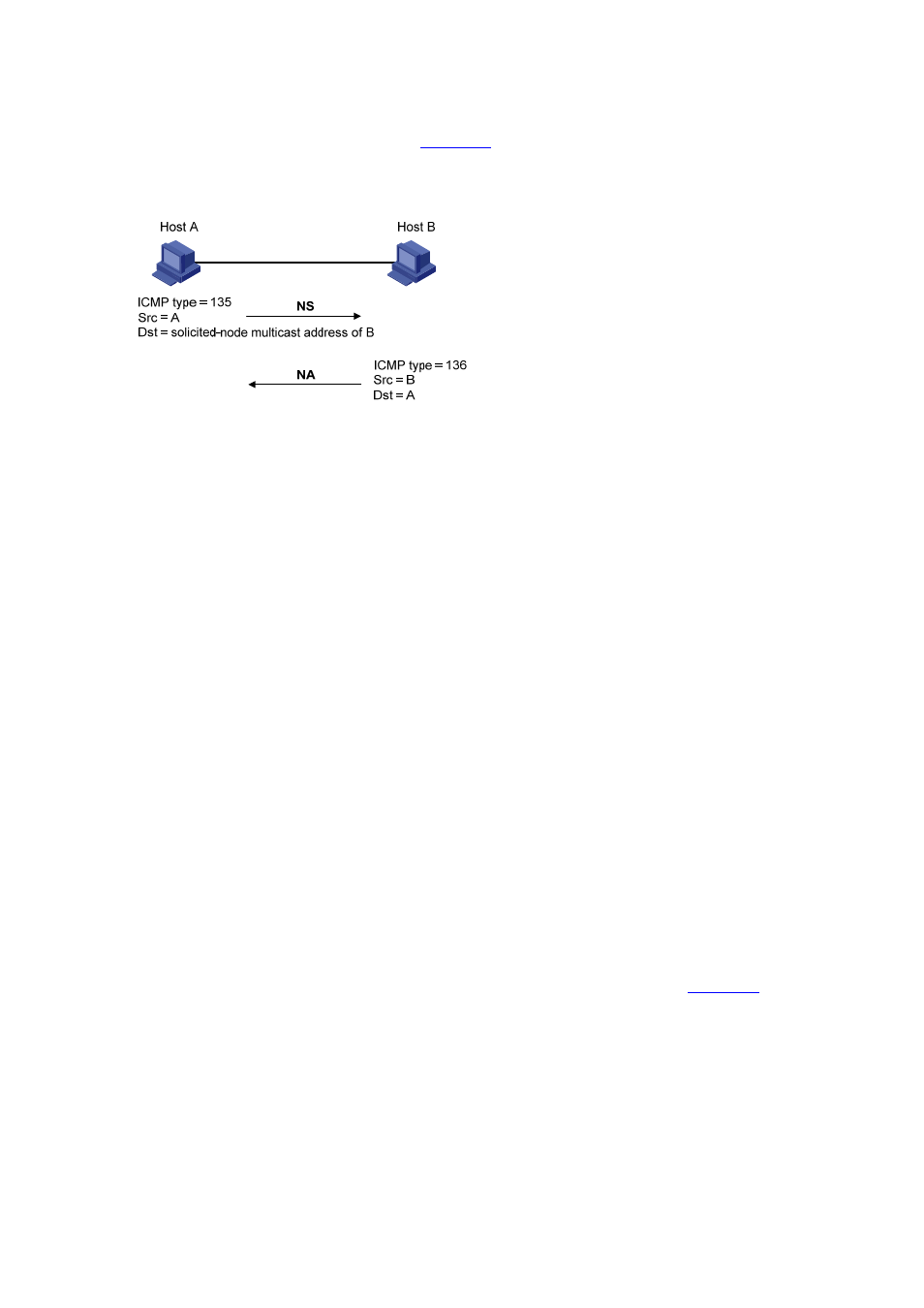Address resolution, Neighbor unreachability detection, Duplicate address detection – H3C Technologies H3C S3600 Series Switches User Manual
Page 1097

1-7
Address resolution
Similar to the ARP function in IPv4, a node acquires the link-layer address of neighbor nodes on the
same link through NS and NA messages.
shows how node A acquires the link-layer address
of node B.
Figure 1-3 Address resolution
The address resolution procedure is as follows:
2) Node A multicasts an NS message. The source address of the NS message is the IPv6 address of
the interface of node A and the destination address is the solicited-node multicast address of node
B. The NS message contains the link-layer address of node A.
3) After receiving the NS message, node B judges whether the destination address of the packet is
the corresponding solicited-node multicast address of its own IPv6 address. If yes, node B learns
the link-layer address of node A and returns an NA message containing the link-layer address of
node B in the unicast mode.
4) Node A acquires the link-layer address of node B from the NA message. After that, node A and
node B can communicate with each other.
Neighbor unreachability detection
After node A acquires the link-layer address of its neighbor node B, node A can verify whether node B is
reachable according to NS and NA messages.
1) Node A sends an NS message whose destination address is the IPv6 address of node B.
2) If node A receives an NA message from node B, node A considers that node B is reachable.
Otherwise, node B is unreachable.
Duplicate address detection
After a node acquires an IPv6 address, it should perform the duplicate address detection to determine
whether the address is being used by other nodes (similar to the gratuitous ARP function). The
duplication address detection is accomplished through NS and NA messages.
shows the
duplicate address detection procedure.
